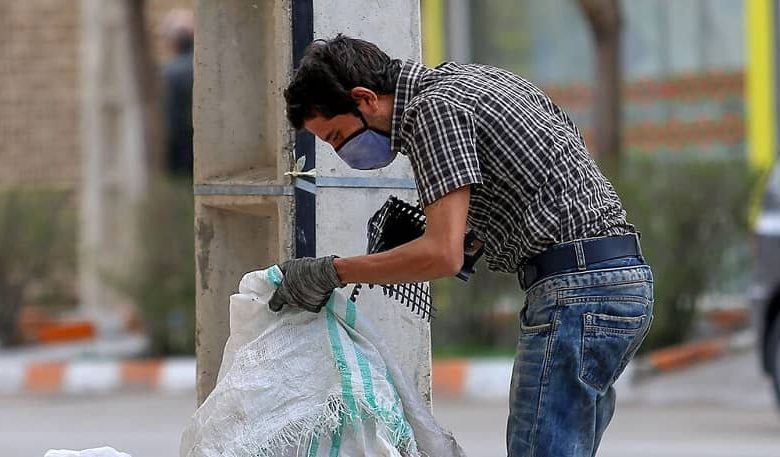Iran’s Amplifying Economic Crises Foretell Major Protests

Written by
Shamsi Saadati
Protests continue across Iran in recent days as people are grappling with water shortages, power outages, and economic pressures. Protests first started in Khuzestan in early July 2021 due to the water crisis. Twelve days after, protests have spread to other Iranian cities, with people calling for regime change.
“Although the main dynamics of these protests have been attributed to water scarcity and related environmental crises, if we look deeper, these protests and unrests have even deeper roots. This includes the increasing livelihood problems, the skyrocketing prices, and the growing poverty, which water shortages and environmental crises have amplified. Livelihood problems, such as skyrocketing prices, have long sounded the alarm for protests,” wrote the state-run on Sunday.
Iran’s potable water crisis in Khuzestan southern Iran
According to the regime’s state-run media, Iran’s economic crises, such as skyrocketing prices and inflation rate, are pressuring Iranians.
Based on the engineered statistics Iran’s state media present, Iran’s point-to-point inflation rate until mid-July was 44%. In other words, Iranians must spend 44% more on basic items and services than in July 2020.
“The average annual inflation rate in the world over the past decade has been about 5 percent, but the Iranian economy in the 2010s has experienced more than 20 percent annual inflation,” wrote the state-run Resalat daily on July 24.
“Iran has one of the highest inflation rates in the world. Increasing the cost of living is the most important factor of psychological pressure on people. The increasing cost of housing and rent is the second factor doubling the pressure on people. The first effect of inflation on people’s lives is a reduction in their purchasing power, which in many cases causes a lot of damage and can negatively affect the economy, business, production, and people’s lives,” Resalat adds.
How the mullahs destroyed Iran’s economy
The reason for Iran’s rampant inflation rate is the regime’s banknote printing for compensating its budget deficit which has increased the liquidity and the inflation rate.
“One of the reasons for the growth of inflation is banknote printing and the growth of liquidity. According to the Central Bank and based on the macroeconomic statistics in June, the sharp growth of the monetary base and government borrowing from the central bank in the spring of 2021 has led to rising inflation. It has also raised concerns about the growth of liquidity,” Resalat daily wrote in this regard.
But the main reason for Iran’s economic crisis is the regime’s institutionalized corruption.
The state-run Keyhan daily acknowledged that “Unbridled cost of goods and services needed by the people, auction of public revenue sources and closure of hundreds of factories and production centers, the declining value of the national currency, giving 30 billion dollars of currency and 60 tons of gold to the corrupted [regime officials] and increasing the price of housing eight times. Breaking records of rising inflation, stagnation and the Gini coefficient, and the spread of poverty and unemployment and social gap” have damaged the Iranian people’s lives.
The regime’s factions try to blame one another for Iran’s economic crises. But this is far from reality. Iran’s economy is suffering from the regime’s institutionalized corruption and mismanagement.
But according to Gholam Hossein Shafei, President of the Iranian Chamber of Commerce, “The problem of Iran’s economy is not [the regime’s former president Mahmoud] Ahmadinejad and [the current president Hassan] Rouhani.” “If the country’s priority is to solve economic problems, the relationship between economy and politics at the domestic and international level should be assigned, and we should increase economic growth. Otherwise, the economic situation will not improve with the wrong traditions institutionalized in the [regime’s] management,” he added, according to the state-run Setar-e Sobh daily on July 19.
In other words, the regime is unable to resolve Iran’s economic problems. While the regime fails in helping Iranians, they are suffering from extreme poverty.
According to the state-run Eghtesad-e Pouya daily on July 19, “For workers and retirees, we can say they are either below the poverty line, or absolute poverty, or just alive. In our society, we see people only alive and not living.”
Therefore, people continue targeting the regime in their slogans for this crisis. They know how the regime has wasted its resources on terrorism. As people in Tehran on Monday chanted, “Not Gaza, nor Lebanon, my life only for Iran,” and “Mullahs, shame on you, let go of our country,” the only way to end Iran’s crises is the regime’s downfall.

